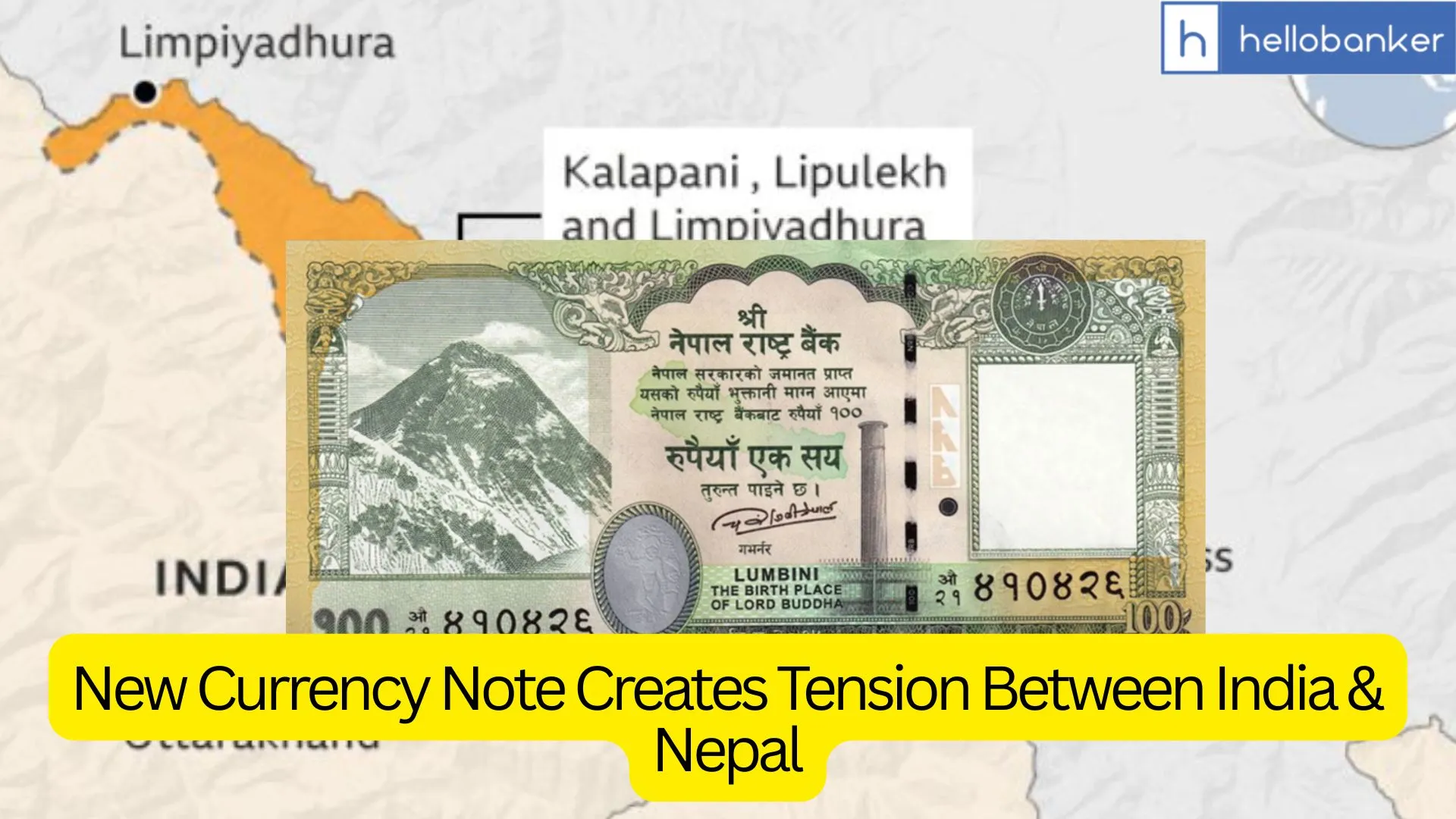Nepal’s central bank on Thursday issued new ₹100 currency notes featuring an updated map that includes the Kalapani, Lipulekh and Limpiyadhura regions. These areas are claimed by India. The new note, released by the Nepal Rastra Bank (NRB), carries the signature of former Governor Maha Prasad Adhikari. The date printed on the note is 2081 BS, which corresponds to the previous year, 2024.
Did You Know: Nepal shares more than 1,850 km of border with five Indian states: Sikkim, West Bengal, Bihar, Uttar Pradesh and Uttarakhand.
Background of the Map Dispute
In May 2020, the then K P Sharma Oli-led government unveiled a revised political map showing Kalapani, Lipulekh and Limpiyadhura as Nepal’s territory. The map was later endorsed by Nepal’s Parliament. India had strongly objected to the move at the time, calling Nepal’s revised map a “unilateral act” and warning that such “artificial enlargement” of territorial claims would not be acceptable. India maintains that all three regions belong to it.
Brief History of Boundary Dispute between India and Nepal
India and Nepal share an 1,850 km border, and while most of it is peaceful, both countries have a longstanding dispute over three areas—Kalapani, Lipulekh and Limpiyadhura—located near the India-Nepal-China tri-junction in Uttarakhand. The dispute originates from different interpretations of the 1816 Treaty of Sugauli, which stated that the River Kali would serve as the boundary, with Nepal on the east and India on the west. India believes the river originates near Kalapani, placing the disputed regions on its side, while Nepal claims the river begins at Limpiyadhura, which shifts the boundary westward and brings the territories under Nepal’s map.
India has controlled Kalapani and nearby regions since the 1962 war with China for strategic security reasons, but Nepal asserts that historical maps support its claim. The issue resurfaced in recent years when India published its updated political map in 2019 and opened the Lipulekh road to Kailash Mansarovar in 2020, prompting Nepal to release its own revised map showing all three regions as its territory. India called Nepal’s move a unilateral act. Although the dispute has caused political tension, both nations seek to resolve it through dialogue, and the border remains peaceful without any military conflict.
Nepal Rastra Bank (NRB) Clarifies: Map Was Already Present on Earlier Notes
An NRB spokesperson said on Thursday that Nepal’s map was present on the old ₹100 currency note as well, and the new version simply updates it according to the government’s decision. He added that among various denominations such as ₹10, ₹50, ₹500 and ₹1,000, only the ₹100 note carries the map of Nepal.
Features of the New Note
The redesigned ₹100 bank note includes several visual and security elements:
- Mt Everest printed on the left side
- A watermark of the Rhododendron, Nepal’s national flower
- A faint green outline map of Nepal at the centre
- The Ashoka Pillar and the text “Lumbini, the birthplace of Lord Buddha”
- A picture of a horned rhino on the reverse side
- A security thread and an embossed black dot to help visually impaired users identify the note
